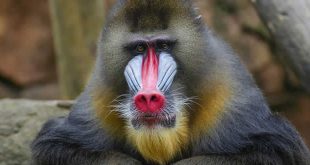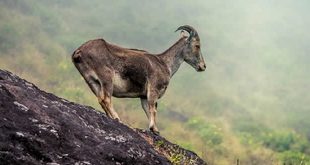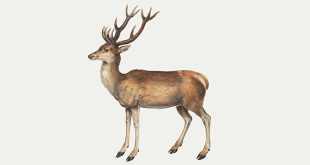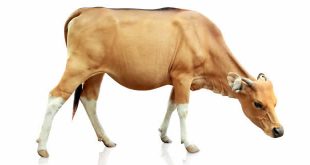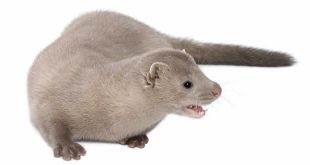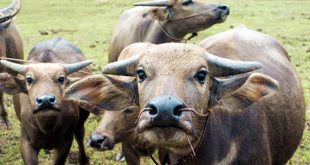 Springbok — The Springbok (Antidorcas marsupialis) is a medium sized brown and white gazelle that stands about 75 cm high. Springbuck males weigh between 33-48 kg and the females between to 30-44 kg. They can reach running speeds of up to 80kph. The Latin name marsupialis derives from a pocket-like skin flap which extends along the middle of the back from the tail onwards. When the male springbok is showing off his strength to attract a mate, or to ward of predators it starts off in a stiff legged trot, jumping up into the air with an arched back every few paces and lifting the flap along his back. Lifting the flap causes the long white hairs under the tail to stand up in a conspicuous fan shape which, in turn emits a strong floral scent of sweat. This ritual is known as pronking which is the Afrikaans word meaning to boast or show off.
Springbok — The Springbok (Antidorcas marsupialis) is a medium sized brown and white gazelle that stands about 75 cm high. Springbuck males weigh between 33-48 kg and the females between to 30-44 kg. They can reach running speeds of up to 80kph. The Latin name marsupialis derives from a pocket-like skin flap which extends along the middle of the back from the tail onwards. When the male springbok is showing off his strength to attract a mate, or to ward of predators it starts off in a stiff legged trot, jumping up into the air with an arched back every few paces and lifting the flap along his back. Lifting the flap causes the long white hairs under the tail to stand up in a conspicuous fan shape which, in turn emits a strong floral scent of sweat. This ritual is known as pronking which is the Afrikaans word meaning to boast or show off.
Springbok (aka. Springbuck) inhabit the dry inland areas of south and southwestern Africa. Their range extends from the northwestern part of South Africa through the Kalahari desert into Namibia and Botswana. They used to be very common, forming some of the largest herds of mammals ever documented, but their numbers have diminished significantly since the 19th century due to hunting and fences from farms blocking their migratory routes.
Although they were once farely scarce, Springbok numbers have drastically increased and they are now almost as abundant as before, thanks to conservation and the South African hunting industry.
Springbuck are between 70-80 centimetres tall at the shoulder, depending on the age, weight and gender of the particular antelope, they weigh between 30-44 kg for the females and 33-48 kg for the males. Their colouring consists of three colours, white, reddish/tan and dark brown. They’re backs are tan coloured and at the bottom they are white, along each side there is a dark brown stripe extending from the shoulder on towards the inside thigh.
Rams are slightly larger than ewes and have thick horns, the ewes tend to have skinnier leg and longer, more frail horns. Average horn length for both genders is 35 cm with the record being a female with horns measuring 49,21 cm in length. Springbok tracks are narrow and sharp and are 5,5 cm from point to point.
In South Africa springbok inhabit the vast grasslands of the Freestate and the open shrublands of the greater and smaller Karoo. In Namibia they live in the grasslands of the south, the kalahari desert to the east and the dry riverbeds of the northern bushveld of the Windhoek region. In Botswana they mostly live in the Kalahari Desert in the southwestern and central parts of the country.
Springbok mostly eat grass, leaves, shoots and other small plants although their favourites include the sweet succulent shrubs of the Karoo.
 Kids Portal For Parents India Kids Network
Kids Portal For Parents India Kids Network
